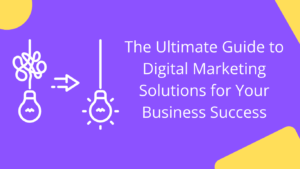In today’s competitive landscape, where businesses vie for customer attention, creating a positive customer experience (CX) is no longer a nicety – it’s a necessity. Think of it like this: exceptional CX is the invisible thread that weaves customer satisfaction, loyalty, and advocacy into the fabric of your business.
So, what exactly is customer experience? Simply put, it’s the sum of all interactions a customer has with your brand, from the moment they discover your product or service to the point of purchase, after-sales support, and beyond.
Here’s why prioritizing CX should be at the forefront of your business strategy
- Boosts Customer Retention: Studies show that acquiring a new customer can cost five times more than retaining an existing one. By exceeding customer expectations and fostering positive interactions, you encourage repeat business and build loyal brand advocates.
- Drives Positive Word-of-Mouth Marketing: Happy customers are your best brand ambassadors. Positive experiences translate into glowing reviews, social media mentions, and recommendations, attracting new customers organically.
- Enhances Brand Reputation: In the age of online reviews and social media, a single negative experience can tarnish your brand image. Focusing on CX helps mitigate negative feedback and build a strong brand reputation that inspires trust.
- Increases Customer Lifetime Value: Loyal customers who have positive experiences are more likely to spend more with your brand over time. This translates into increased revenue and a more sustainable business model.
Now that we’ve established the importance of CX, how do you go about creating exceptional experiences for your customers?
Crafting a Winning Customer Experience Strategy
Building a customer-centric organization takes commitment from all levels. Here are some key steps to get you started
- Know Your Customer: Understanding your ideal customer profile is paramount. Conduct market research, analyze customer data, and gather feedback through surveys or social media interactions. Knowing your customer’s needs, wants, and pain points will help tailor your CX strategy accordingly.
- Map the Customer Journey: Visualize all the touchpoints a customer has with your brand. This could include your website, social media presence, physical store, customer service interactions, and even product packaging. Identify potential areas of friction or confusion and focus on streamlining the customer journey for a seamless experience.
- Embrace Feedback: Actively seek customer feedback through surveys, reviews, and social media engagement. Analyze this feedback to identify areas for improvement and implement changes based on customer insights.
- Invest in Employee Training: Empower your employees with the knowledge and skills to deliver exceptional customer service. Train them on your brand values, active listening techniques, and problem-solving skills. A well-trained and empowered workforce is vital for creating positive CX moments.
- Personalize the Experience: Today’s customers expect a level of personalization. Leverage technology to tailor marketing messages, product recommendations, and support interactions to individual customer needs and preferences.
Building Blocks of a Positive Customer Experience
- Seamless Interactions: Strive to make every interaction with your brand, be it online, in-store, or via phone, smooth and efficient. Ensure clear communication, user-friendly interfaces, and readily available support channels.
- Omnichannel Experience: Customers expect a consistent brand experience across all channels. Ensure seamless integration between your website, mobile app, social media presence, and physical stores (if applicable).
- Proactive Support: Don’t wait for customers to come to you with problems. Be proactive in addressing their needs and anticipating potential challenges. Offer readily available self-service options and FAQs, and empower your customer service team to resolve issues swiftly and efficiently.
- Exceed Expectations: Go beyond simply meeting customer needs – strive to exceed them. Offer unexpected delights, personalized recommendations, or loyalty programs that show you value your customers and appreciate their business.
FAQs on Customer Experience
How can I measure customer experience?
There are several ways to measure CX. Customer Satisfaction Scores (CSAT), Net Promoter Scores (NPS), and Customer Effort Scores (CES) are all commonly used metrics. Additionally, social media sentiment analysis and customer feedback surveys can provide valuable insights.
What are the biggest challenges in delivering exceptional CX?
Some common challenges include
1. Lack of clear understanding of customer needs
2. Siloed departments leading to disjointed customer journeys
3. Inconsistent brand experience across different channels
4. Inefficient customer service processes
How can technology help improve CX?
Technology can be a powerful tool for enhancing CX. Utilizing CRMs, chatbots, self-service portals, and data analytics can streamline processes, and personalize.
What are some emerging trends in customer experience?
The world of CX is constantly evolving. Here are a few trends to watch
Artificial Intelligence (AI): Chatbots and virtual assistants are increasingly used to provide 24/7 customer support and personalized recommendations.
Augmented Reality (AR) and Virtual Reality (VR): These technologies offer immersive experiences that can enhance product visualization and customer engagement.
The Rise of the “Experience Economy”: Customers are increasingly seeking experiences over just products. Businesses are focusing on creating unique and memorable experiences throughout the customer journey.
The Importance of Social Responsibility: Customers are more likely to support brands that align with their values. Businesses are focusing on sustainability, ethical practices, and social impact initiatives to build customer loyalty.
How can I personalize the customer experience on a budget?
Even without a hefty budget, you can personalize the customer experience in several ways
Address customers by name: This small touch shows you recognize and value them as individuals.
Segment your email marketing lists: Tailor your email marketing messages to different customer segments based on their interests and purchase history.
Offer loyalty programs: Reward repeat customers with exclusive discounts or early access to new products.
Empower your customer service team: Train your team to personalize interactions and go the extra mile to address individual customer needs.
Utilize customer data (wisely): Leverage customer data (with consent, of course) to personalize product recommendations and marketing messages.
Additional Resources
- CustomerThink: https://customerthink.com/ – A leading online community dedicated to customer experience thought leadership and best practices.
- The Center for CX Excellence: https://www.amazon.com/Exceptional-Customer-Service-Lisa-Ford/dp/1605500380 – A non-profit organization offering resources, training, and certification programs for CX professionals.
- Shep Hyken’s Customer Service Blog: https://hyken.com/blog/ – Insights and advice from customer service expert Shep Hyken.
- Gartner Customer Experience & CRM Summit: https://www.gartner.com/en/webinar/441573/1042938 – An annual event showcasing the latest trends and innovations in CX.
Best Books on Customer Experience
Looking to expand your CX knowledge? Here are a few highly-rated books to consider
- Hooked – How to Build Habit-Forming Products by Nir Eyal
- Start with Why – How Great Leaders Inspire Everyone to Take Action by Simon Sinek
- The Experience Economy – Competing for Customer Time, Value, and Loyalty by B. Joseph Pine II and James H. Gilmore
Conclusion
By prioritizing customer experience and implementing a customer-centric approach, businesses can build stronger relationships, foster brand loyalty, and ultimately drive sustainable growth. Remember, creating a positive CX is an ongoing journey, not a one-time fix. Continuously gather feedback, adapt your strategy, and empower your employees to deliver exceptional service at every touchpoint. When you put the customer at the heart of your business, you’ll not only see an improvement in customer satisfaction and loyalty but also experience a positive impact on your bottom line.




